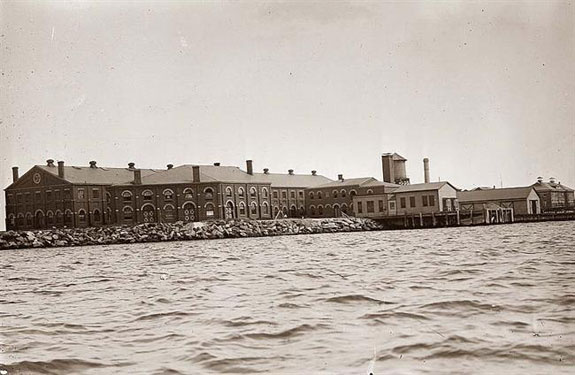Trending
A look at two of NYC’s forgotten artificial islands
The islands were built to quarantine infectious immigrants

Built in the 1870s to quarantine potentially infectious immigrants, Hoffman and Swinburne islands are largely forgotten today.
Measuring roughly 10 and three acres respectively, the buildings that once covered the islands have crumbled, with very little left standing after Hurricane Sandy. But they remain an important and interesting piece of NYC history.
The islands were built for $400,000 in 1870s dollars and sold to the Federal Government in 1921 for almost $1.4 million, according to the blog Hey Ridge.
As immigration peaked in the 19th Century, the task of guarding the metropolis’ population from infectious dieses became increasing difficult, leading to the creation of the islands.
A Harper’s Weekly article from 1879 describes Swinburne as “healthful” – if a bit heavy-handed by today’s standards:
“When the Boarding Officer from Illinois finds any yellow fever or cholera patients on the incoming vessels, a signal is set, and one of the steamers belonging to the quarantine service comes and bears away the sufferers to Swinburne Island. Immediately upon reaching there, they are stripped of their clothing, which is at once burned in a furnace constructed for that purpose, and they are placed in the sick wards.”
“If recovering,” the article adds, “the patients are removed across to the convalescent wards. They are then permitted to take daily exercise on the walk surrounding the wards, or to recline by the hour upon the grass-plots in front of the Superintendent’s residence, where they are protected from the sun’s rays by a heavy canvas. This change to outdoor life rapidly hastens their recovery, and, in fact, the whole surroundings of the hospital are so conducive to health, that nearly all the patients who are brought here in time are restored, and yellow fever has no terrors whatever for the persons and employés (sic) upon the island, of whom but one has ever contracted it. When sufficiently well, the convalescents are taken to Brooklyn or rejoin their vessels. In case of death, the bodies are placed in plain coffins and carried in small boats across the bay to the burying ground at Seguine’s Point.” [Hey Ridge] – Christopher Cameron




